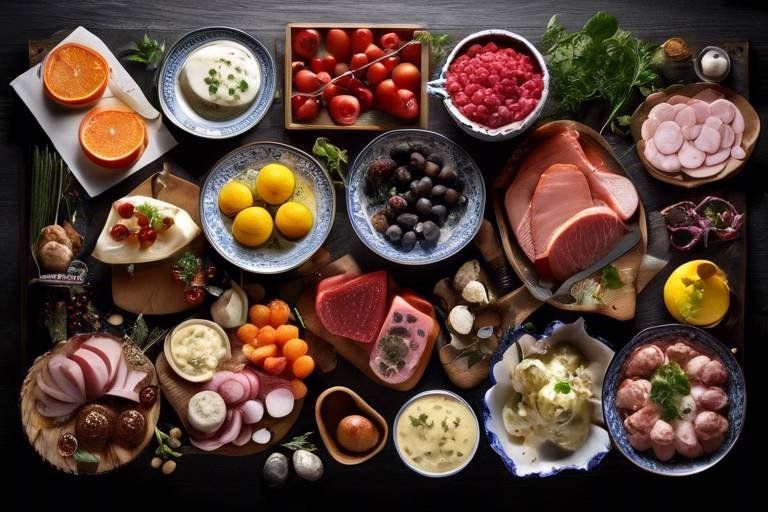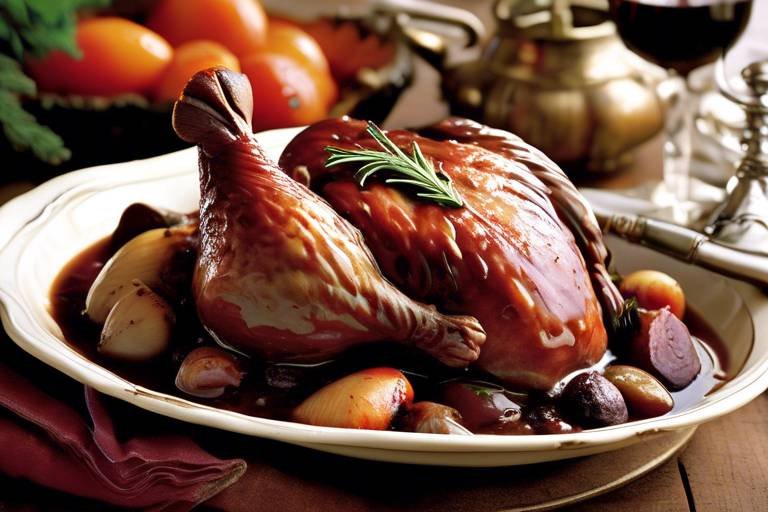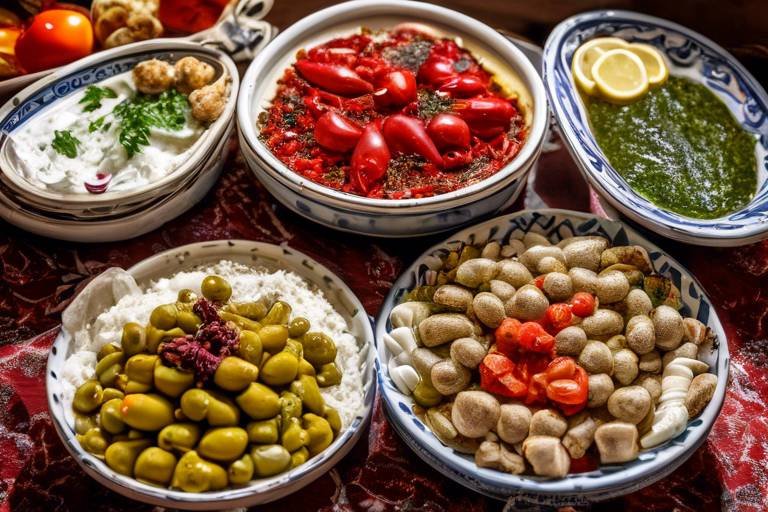Exploring the Flavors of Scandinavian Smörgåsbord
Scandinavian smörgåsbord is a culinary experience like no other, offering a delightful array of flavors and textures that tantalize the taste buds. From the tangy pickled herring to the savory meatballs and hearty rye bread, each dish tells a story of Nordic tradition and heritage. The smörgåsbord is not just a meal; it’s a celebration of the rich culinary history of Scandinavia.
As you embark on a journey to explore the flavors of Scandinavian smörgåsbord, you will uncover a world of ingredients that come together to create a symphony of tastes. Cured fish, cold cuts, cheeses, and an assortment of spreads form the backbone of this festive buffet, showcasing the bounty of the land and sea. Freshness and seasonality play a crucial role in capturing the authentic essence of each dish.
Delving into the history of smörgåsbord reveals its roots in 16th-century Sweden, where it started as a simple meal and evolved into a grand feast for special occasions and holidays. Over the centuries, this culinary tradition has become a symbol of hospitality and abundance, inviting guests to indulge in a feast fit for royalty.
Modern chefs and food enthusiasts have taken the concept of smörgåsbord to new heights, infusing it with innovative twists and creative flair. Fusion cuisine and contemporary presentations breathe new life into this age-old tradition, offering a fresh perspective on classic Nordic flavors.
Pairing drinks with smörgåsbord dishes is an art form in itself, with aquavit, beer, and schnapps enhancing the dining experience with their unique flavors. The interplay between beverages and food elevates the overall taste profile, creating a harmonious balance that delights the senses.
Etiquette and customs play a significant role in the enjoyment of a smörgåsbord meal, guiding guests on the proper way to navigate the buffet table and engage in toasting traditions. Respect for the culinary heritage is paramount, ensuring that each bite is savored with grace and appreciation.
Hosting your own smörgåsbord feast is a joyous occasion that brings friends and family together in a spirit of conviviality and warmth. From planning the menu to setting the table, every detail contributes to a memorable dining experience that honors the traditions of Scandinavian hospitality.
Celebrating with smörgåsbord is a time-honored tradition in Scandinavia, marking festive occasions and cultural events with an abundance of food and fellowship. Whether it’s a Christmas dinner or a Midsummer feast, the smörgåsbord serves as a centerpiece of communal joy, uniting people through the shared experience of good food and good company.
History of Smörgåsbord
Discover the rich culinary tradition of Scandinavian smörgåsbord, a festive buffet featuring a variety of dishes like pickled herring, meatballs, and rye bread. Learn about the history, ingredients, and cultural significance of this iconic Nordic dining experience.
Explore the origins of the smörgåsbord tradition, dating back to the 16th century in Sweden. Discover how it evolved from a simple meal to a grand feast served during special occasions and holidays.
Learn about the essential components that make up a traditional Scandinavian smörgåsbord, including cured fish, cold cuts, cheeses, breads, and various spreads. Understand the importance of fresh, seasonal ingredients in creating authentic flavors.
Explore the diverse regional interpretations of smörgåsbord across Scandinavia, from the lavish spreads of Sweden to the simpler offerings of Norway and Denmark. Delve into the unique flavors and dishes that define each country’s culinary identity.
Discover how contemporary chefs and food enthusiasts are reinventing the traditional smörgåsbord concept with innovative dishes and creative presentations. Explore fusion cuisine and new flavor combinations that bring a fresh perspective to this classic Nordic tradition.
Learn about the art of pairing beverages with smörgåsbord dishes, including aquavit, beer, and traditional schnapps. Discover how different drinks complement the flavors and textures of the various items on the buffet, enhancing the overall dining experience.
Gain insights into the proper etiquette and customs associated with enjoying a smörgåsbord meal, such as the order of serving dishes, toasting traditions, and polite dining behavior. Learn how to navigate the buffet table with finesse and respect for the culinary heritage.
Get tips and ideas for hosting your own smörgåsbord gathering, from planning the menu and setting the table to creating a welcoming atmosphere for guests. Explore recipes and serving suggestions to create a memorable and delicious dining experience.
Discover how smörgåsbord is central to festive celebrations and cultural events in Scandinavia, from Christmas dinners to Midsummer feasts. Learn about the role of food in bringing people together and fostering a sense of community and tradition.
Stay tuned for answers to common queries about Scandinavian smörgåsbord!
Key Ingredients in Smörgåsbord
The key ingredients in a traditional Scandinavian smörgåsbord play a crucial role in creating the distinctive flavors and textures that define this iconic culinary experience. One of the essential components of a smörgåsbord is cured fish, such as pickled herring, gravlax, or smoked salmon. These savory and tangy fish dishes are often served with a variety of flavorful sauces and condiments to enhance their taste.
Another staple of the smörgåsbord is a selection of cold cuts, including thinly sliced meats like roast beef, ham, and turkey. These meats are typically accompanied by an assortment of cheeses, ranging from mild to sharp flavors, adding richness and complexity to the buffet spread.
When it comes to bread, rye bread is a traditional favorite on the smörgåsbord table. This dense and hearty bread is often served with butter or creamy spreads like liver pâté or herring salad, contributing to a satisfying and comforting dining experience.
In addition to these main components, various spreads and condiments are essential for adding depth of flavor to the smörgåsbord. Common spreads include mustard, horseradish, and lingonberry jam, each offering a unique taste that complements the other dishes on the buffet.
One of the key principles of a traditional smörgåsbord is the emphasis on using fresh, seasonal ingredients to create dishes that reflect the changing seasons and local produce. This commitment to quality and authenticity ensures that each bite is a celebration of the Nordic culinary heritage.
Regional Variations of Smörgåsbord
When it comes to exploring the flavors of Scandinavian smörgåsbord, one cannot overlook the diverse regional variations that add a unique touch to this culinary tradition. Each Scandinavian country brings its own flair and distinctiveness to the smörgåsbord table, reflecting the rich tapestry of Nordic cuisine.
In Sweden, the land of the smörgåsbord’s origin, the spread is often a grand affair, featuring an extensive selection of dishes ranging from pickled herring and gravlax to meatballs and Janssons frestelse, a creamy potato and anchovy gratin. The Swedish smörgåsbord is a true feast for the senses, showcasing a mix of flavors and textures that delight the palate.
On the other hand, Norway offers a simpler and more rustic take on the smörgåsbord, focusing on high-quality, locally sourced ingredients that highlight the country’s natural bounty. Cold cuts of cured meats, smoked salmon, and artisanal cheeses take center stage, accompanied by hearty breads and wholesome spreads like brunost, a sweet caramelized cheese.
Denmark, known for its open-faced sandwiches or smørrebrød, puts a creative spin on the traditional smörgåsbord with artistic presentations and bold flavor combinations. Dishes like leverpostej (liver pâté), roast pork with crackling, and pickled vegetables showcase the Danish penchant for simplicity and elegance in dining.
Finland brings its own distinctive touch to the smörgåsbord with dishes like karjalanpiirakka (Karelian pasties), kalakukko (fish-filled pastries), and sahti (traditional beer). The Finnish smörgåsbord reflects the country’s deep connection to nature and its emphasis on hearty, comforting fare.
In Iceland, the smörgåsbord, known as hlaðborð, features an array of seafood delicacies like smoked trout, langoustine tails, and pickled herring, reflecting the island nation’s maritime heritage and love for fresh, sustainable ingredients.
Overall, the regional variations of smörgåsbord across Scandinavia offer a glimpse into the diverse culinary landscape of the Nordic countries, each contributing its own unique flavors and traditions to this beloved dining experience.
Modern Twists on Smörgåsbord
When it comes to the traditional Scandinavian smörgåsbord, chefs and food enthusiasts are constantly finding new ways to put a modern twist on this classic dining experience. Picture this: a fusion of traditional flavors with innovative dishes, creatively presented to surprise and delight your taste buds.
Imagine a beautifully curated smörgåsbord featuring a mix of classic dishes like pickled herring and meatballs alongside contemporary creations that push the boundaries of Nordic cuisine. It’s like a culinary explosion of flavors and textures that elevate the dining experience to a whole new level.
Contemporary chefs are experimenting with new ingredients, techniques, and flavor combinations to breathe new life into the smörgåsbord tradition. From reinvented classics to bold, avant-garde creations, these modern twists are sure to leave you craving more.
Think of it as a journey of culinary exploration, where traditional meets contemporary in a harmonious blend of old and new. Whether it’s a reinterpretation of a classic dish or a completely original creation, these modern twists on smörgåsbord are guaranteed to surprise and impress even the most discerning food connoisseurs.
Pairing Drinks with Smörgåsbord
When it comes to enjoying a traditional Scandinavian smörgåsbord, the art of pairing drinks plays a crucial role in enhancing the overall dining experience. Each dish on the buffet offers unique flavors and textures that can be complemented by the right beverage choice. From aquavit to beer and traditional schnapps, the selection of drinks can elevate the taste of the dishes and create a harmonious culinary journey.
One popular choice for pairing with smörgåsbord dishes is aquavit, a traditional Scandinavian spirit known for its distinct herbal and spice notes. The botanical flavors of aquavit can enhance the taste of cured fish and cold cuts, adding a depth of flavor to each bite. Similarly, beer, whether it’s a light lager or a hoppy IPA, can be a refreshing accompaniment to meatballs and hearty breads, balancing out the richness of the dishes.
When it comes to toasting and celebrating, traditional schnapps is often enjoyed alongside smörgåsbord feasts. The strong, aromatic nature of schnapps can cleanse the palate between bites and provide a warming sensation that complements the hearty Nordic fare. Whether you prefer a traditional akvavit or a modern craft beer, the key is to experiment and find the perfect pairing that suits your taste preferences.
Etiquette and Customs of Smörgåsbord
When it comes to enjoying a traditional Scandinavian smörgåsbord, there are certain etiquette and customs that one should be aware of to fully appreciate the experience. The art of partaking in a smörgåsbord goes beyond just the food on the table; it involves a set of unwritten rules and traditions that add to the overall enjoyment of the meal.
One key aspect of smörgåsbord etiquette is the order in which dishes are served and consumed. Typically, diners start with the cold dishes, such as pickled herring and cured meats, before moving on to the warm dishes like meatballs and sausages. This sequential approach allows for a gradual progression of flavors and textures, enhancing the dining experience.
Another important custom associated with smörgåsbord is the tradition of making a toast before the meal begins. This gesture of raising a glass and offering a heartfelt message of goodwill is a common practice at festive gatherings in Scandinavia. It sets a convivial tone for the meal and fosters a sense of camaraderie among diners.
When navigating the buffet table, it is considered polite to serve oneself in moderation and avoid piling up plates with excessive amounts of food. The emphasis is on savoring each dish and appreciating the variety of flavors offered, rather than overindulging. Additionally, it is customary to wait for everyone at the table to be served before starting to eat, promoting a sense of unity and shared enjoyment.
Furthermore, respecting the culinary heritage and origins of the dishes presented on the smörgåsbord is essential. Taking the time to learn about the ingredients, preparation methods, and cultural significance of each item can deepen one’s appreciation for the meal and the traditions it represents. Engaging in conversations about the food and sharing knowledge about the dishes can also enhance the communal aspect of the dining experience.
In terms of dining behavior, it is customary to maintain a sense of decorum and courtesy while enjoying a smörgåsbord. This includes using utensils appropriately, chewing with your mouth closed, and engaging in polite conversation with fellow diners. By observing these etiquettes and customs, one can fully immerse themselves in the rich culinary heritage of the Scandinavian smörgåsbord tradition.
Hosting a Smörgåsbord Feast
Hosting a Smörgåsbord Feast is a delightful way to share the rich culinary tradition of Scandinavian cuisine with your friends and family. To create an authentic and memorable dining experience, start by planning a diverse menu that includes a variety of classic dishes such as pickled herring, Swedish meatballs, and crispbread. Incorporate a mix of flavors and textures to cater to different tastes and preferences.
Setting the table for a smörgåsbord feast is an essential part of the experience. Use traditional Scandinavian tableware and decorations to create a festive atmosphere. Arrange the dishes in a visually appealing manner, with each item having its designated place on the table. Consider using a tablecloth with Nordic patterns or colors to enhance the theme.
When serving the smörgåsbord, follow the traditional order of dishes starting with the fish course, followed by cold cuts, warm dishes, and ending with desserts. Encourage guests to sample a bit of everything and enjoy the array of flavors. Provide small plates and utensils for easy serving and sharing.
Offer a selection of beverages to complement the meal, such as aquavit, beer, and schnapps. Consider creating a signature cocktail or mocktail that pairs well with the flavors of the dishes. Provide non-alcoholic options for those who prefer not to drink alcohol.
To create a welcoming atmosphere for your guests, play some background music featuring Scandinavian artists or traditional folk tunes. Encourage mingling and conversation around the table, sharing stories and memories while savoring the delicious food. Consider incorporating some fun icebreaker games or activities to engage everyone in the festivities.
Remember that hosting a smörgåsbord feast is not just about the food; it’s about coming together to celebrate and enjoy each other’s company. Embrace the spirit of togetherness and hospitality that is central to Scandinavian culture, and create a warm and inviting space for your guests to relax and indulge in the flavors of the Nordic cuisine.
Celebrating with Smörgåsbord
When it comes to celebrating with Smörgåsbord, the experience goes beyond just food—it’s a cultural celebration that brings people together in a festive and communal atmosphere. In Scandinavia, Smörgåsbord is an integral part of various traditional celebrations, from Christmas dinners to Midsummer feasts. These gatherings are not just about the delicious array of dishes but also about the sense of togetherness and shared traditions that they foster.
Picture a long table adorned with an assortment of dishes, each representing a unique flavor and culinary tradition. The vibrant colors and tantalizing aromas create a sensory explosion, setting the stage for a memorable dining experience. As guests gather around the table, laughter and conversation flow freely, enhancing the convivial atmosphere of the celebration.
At a Smörgåsbord feast, guests are encouraged to sample a little bit of everything, savoring each bite and experiencing the diverse flavors that Nordic cuisine has to offer. From savory meatballs to tangy pickled herring, every dish tells a story of heritage and culinary craftsmanship, adding depth and richness to the communal meal.
As the evening progresses, traditional songs may be sung, toasts may be made, and stories may be shared, further enriching the cultural experience. The act of breaking bread together, quite literally in this case, symbolizes unity and hospitality, creating a sense of connection among those gathered around the table.
Whether it’s a joyous holiday celebration or a special occasion with loved ones, Smörgåsbord embodies the spirit of sharing, abundance, and tradition. It transcends mere food and becomes a symbol of community, bringing people closer together through the shared enjoyment of culinary delights and cultural heritage.
Frequently Asked Questions
- What is a smörgåsbord?
A smörgåsbord is a traditional Scandinavian buffet-style meal featuring a variety of cold and hot dishes, typically served during festive occasions and holidays. It includes a selection of dishes like pickled herring, meatballs, cheeses, breads, and spreads.
- What are some key ingredients in a smörgåsbord?
Key ingredients in a smörgåsbord include cured fish, cold cuts, cheeses, rye bread, pickled vegetables, and various spreads like butter, cream cheese, and caviar. Fresh, seasonal ingredients are essential to creating the authentic flavors of a smörgåsbord.
- How is smörgåsbord different across Scandinavian countries?
Smörgåsbord varies across Scandinavian countries with each region offering unique dishes and flavors. Sweden is known for its lavish spreads, while Norway and Denmark have simpler interpretations. The selection of dishes and traditional flavors differ based on regional influences.
- What drinks are typically paired with smörgåsbord?
Common drinks paired with smörgåsbord include aquavit, beer, and traditional schnapps. These beverages are chosen to complement the flavors of the dishes on the buffet, enhancing the overall dining experience with their unique tastes and textures.
- What are some etiquette tips for enjoying a smörgåsbord?
Proper etiquette for a smörgåsbord includes serving dishes in a specific order, making toasts during the meal, and respecting dining customs. Guests are encouraged to sample a bit of everything, pace themselves, and engage in polite conversation while enjoying the feast.
Scandinavian, Smörgåsbord, Cuisine, Nordic, Traditional, Herring, Pickled, Aquavit, , Scandinavian, Smörgåsbord, Cuisine, Nordic, Traditional, Herring, Pickled, Aquavit,
Share this content:














Post Comment